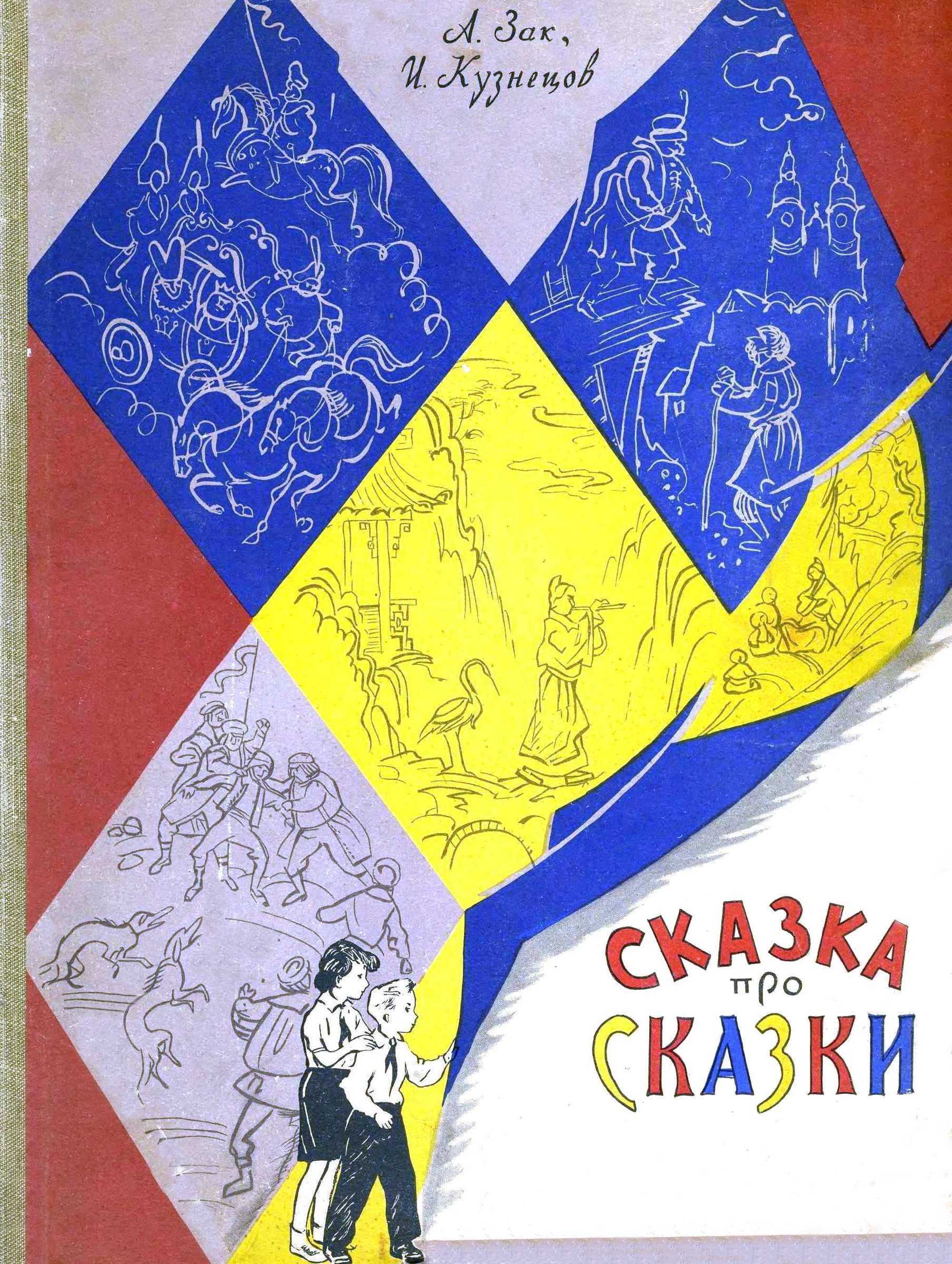(НЕ)страшная математика: как ее понять и прокачать свой мозг - Джо Боулер
Книгу (НЕ)страшная математика: как ее понять и прокачать свой мозг - Джо Боулер читаем онлайн бесплатно полную версию! Чтобы начать читать не надо регистрации. Напомним, что читать онлайн вы можете не только на компьютере, но и на андроид (Android), iPhone и iPad. Приятного чтения!
Шрифт:
Интервал:
Закладка:
183. Menon, “Brain Networks for Mental Arithmetic.”
184. C. Kalb, “What Makes a Genius?” National Geographic, May 2017.
185. J. Park and E. M. Brannon, “Training the Approximate Number System Improves Math Proficiency,” Psychological Science 24, no. 10 (2013): 2013–19; Cortes et al., “Transfer from Spatial Education.”
186. Bofferding, “Negative Integer Understanding”; Tsang et al., “Learning to ‘See’”; Macrine and Fugate, eds., Movement Matters.
187. Bruce McCandliss, Stanford Graduate School of Education, n.d., https://ed.stanford.edu/faculty/brucemc.
188. M. Guillaume, E. Roy, A. Van Rinsveld, G. S. Starkey, Project iLe-ad Consortium, M. R. Uncapher, and B. D. McCandliss, “Groupi-tizing Reflects Conceptual Developments in Math Cognition and Inequities in Math Achievement from Childhood through Adolescence,” Child Development 94, no. 2 (2023): 335–47.
189. I. Benson, N. Marriott, and B. D. McCandliss, “Equational Reasoning: A Systematic Review of the Cuisenaire-Gattegno Approach,” Frontiers in Education (2022): 507.
190. M. Penner-Wilger, L. Fast, J.-A. LeFevre, B. L. Smith-Chant, S.-L. Skwarchuk, D. Kamawar, and J. Bisanz, “Subitizing, Finger Gnosis, and the Representation of Number,” Proceedings of the 31st Annual Cognitive Science Society 31 (2009): 520–25.
191. J. Boaler and L. Chen, “Why Kids Should Use Their Fingers in Math Class,” Atlantic, April 13, 2016, https://www.theatlantic.com/education/archive/2016/04/why-kids-should-use-their-fin-gers-in-math-class/478053/.
192. R. S. Siegler and G. B. Ramani, “Playing Linear Numerical Board Games Promotes Low-Income Children’s Numerical Development,” Developmental Science 11 (2008): 655–61.
193. Yeager et al., “Teacher Mindsets Help Explain.”
194. Anderson et al., “Achieving Elusive Teacher Change,” 98; Bui et al., “Systematic Review.”
195. Мы с соавторами Джен Мансон и Кэти Уильямс написали несколько книг по математике для программы К–8; смотрите “K–8 Curriculum”, youcubed.org.
196. Gray and Tall, “Duality, Ambiguity, and Flexibility”; H. Chang, L. Chen, Y. Zhang, Y. Xie, C. de Los Angeles, E. Adair… and V. Menon, “Foundational Number Sense Training Gains Are Predicted by Hippocampal – Parietal Circuits,” Journal of Neuroscience 42, no. 19 (2022): 4000–15.
197. L. Ma, Knowing and Teaching Elementary Mathematics: Teachers’ Understanding of Fundamental Mathematics in China and the United States, Studies in Mathematical Thinking and Learning Series (Oxfordshire, UK: Routledge, 2010).
198. “Online Student Course,” youcubed.org, n.d., https://www. youcubed.org/online-student-course/.
199. “WIM Videos,” youcubed.org, n.d., https://www.youcubed.org/ resource/wim-videos/.
200. J. Boaler and C. Humphreys, Connecting Mathematical Ideas: Middle School Video Cases to Support Teaching and Learning (Portsmouth, NH: Heinemann, 2005).
201. “Videos,” youcubed.org, n.d., https://www.youcubed.org/resource/ videos/.
202. M. Cordero, “It’s (Not) Ours to Reason Why: A Comparative Analysis of Algorithms for the Division of Fractions” (honor’s thesis, Stanford University, 2017), 1.
203. Cordero, “It’s (Not) Ours to Reason Why,” 1.
204. D. D. Pesek and D. Kirshner, “Interference of Instrumental Instruction in Subsequent Relational Learning,” Journal for Research in Mathematics Education 31, no. 5 (2000): 524–40.
205. T. P. Carpenter and M. K. Corbitt, eds., “Results from the Second Mathematics Assessment of the National Assessment of Educational Progress,” Fraction Bars, n.d., https://fractionbars.com/ Research_Tch_Fracs/Results2nd.html.
206. “Online Student Course,” youcubed.org.
207. Merzenich, SoV-Wired, 2; Doidge, Brain That Changes Itself.
208. Dweck and Yeager, “Mindsets.”
209. Boaler, “Prove It to Me!”
210. Фон Нгуен дает множество примеров алгебраических паттернов на своем прекрасном сайте “Visual Patterns,” https:// www.visualpatterns.org/.
211. “Mathematical Mindset Algebra,” youcubed.org, n.d., https:// www.youcubed.org/algebra/.
212. A. Proehl, “For Bay Area Designer Diarra Bousso, Math + Art = Happiness,” KQED, June 1, 2023, https://www.kqed.org/arts/13929878/ for-bay-area-designer-diarra-bousso-math-art-happiness.
213. E. Farra, “A Senegal-Raised, Silicon Valley-Based Designer Shares Her Vision for a More Sustainable and Inclusive Future,” Vogue, June 5, 2020, https://www.vogue.com/article/ diarra-bousso-diarrablu-sustainable-made-in-senegal-collec-tion; H. Jennings, “Meet Diarra Bousso: One of Senegal’s Most Promising Designers,” CNN, April 19, 2021, https://www.cnn.com/style/article/diarrablu-diarra-bousso-senegal/index.html.
214. “Diarra Bousso, MA ’18 Stanford Teacher Education Program: Fusing Fashion and Math,” Stanford Graduate School of Education, December 12, 2022, https://ed.stanford.edu/about/commu-nity/diarra-bousso.
215. Proehl, “For Bay Area Designer Diarra Bousso.”
216. “What Is Notice and Wonder?” National Council of Teachers of Mathematics, n.d., https://www.nctm.org/noticeandwonder/.
Глава 6. Красота математических понятий и связей
217. Gray and Tall, “Duality, Ambiguity, and Flexibility.”
218. Gray and Tall, “Duality, Ambiguity, and Flexibility.”
219. W. P. Thurston, “Mathematical Education” (2005): 5, arXiv.org/ abs/math/0503081.
220. Статья появится позже; смотрите обновления на сайте youcubed.org.
221. California Digital Learning Integration and Standards Guidance, https://www.cadlsg.com/.
222. J. D. Bransford, A. L. Brown, and R. R. Cocking, How People Learn, vol. 11 (Washington, DC: National Academy Press, 2000), 20.
223. Смотрите программу 2023 Mathematics Framework, California Department of Education.
224. “K–8 Curriculum,” youcubed.org.
225. Hawkins, A Thousand Brains.
226. “Big Picture Thinking: Definition, Strategies and Careers,” Indeed, проверено 24 июня 2022 года, https://www.indeed.com/ca-reer-advice/career-development/big-picture-thinking-strategies.
227. L. Fries, J. Y. Son, K. B. Givvin, and J. W. Stigler, “Practicing Connections: A Framework to Guide Instructional Design for Developing Understanding in Complex Domains,” Educational Psychology Review 33, no. 2 (2021): 739–62.
228. “K–8 Curriculum,” youcubed.org.
229. “Sketchnoting in the Classroom,” Verbal to Visual, n.d., https:// verbaltovisual.com/sketchnoting-in-the-classroom/.
230. A. Fernández-Fontecha, K. L. O’Halloran, S. Tan, and P. Wignell, “A Multimodal Approach to Visual Thinking: The Scientific Sketch-note,” Visual Communication 18, no. 1 (2019): 5–29, at 7, https:// journals.sagepub.com/doi/pdf/10.1177/1470357218759808.
231. Педагоги делятся практикой составления таких набросков и создают полезные ресурсы для всех; в частности, это Лаура и ее канал в социальных сетях Verbal to Visual; смотрите “Tap Into the Power of Your Visual Brain,” Verbal to Visual, n.d., https://verbaltovisual.com/an-introduction-to-visual-note-taking.
232. P. A. Mueller and D. M. Oppenheimer, “The Pen Is Mightier Than the Keyboard: Advantages of Longhand over Laptop Note Taking,” Psychological Science 25, no. 6 (2014): 1159–68.
233. A. H. Ziadat, “Sketchnote and Working Memory to Improve Mathematical Word Problem Solving Among Children with Dyscalculia,” International Journal of Instruction 15, no. 1 (2022): 509–26; K. Fernandez and J. He, “Designing Sketch and Learn:
Creating a Playful Sketching Experience That Helps Learners Build a Practice Toward Visual Notetaking (aka Sketchnotes),” Stanford Libraries Digital Stack, 2018, https://stacks.stanford. edu/file/druid: jx835yk3980/fernandez_he_sketch_and_learn.pdf.
234. M. Rohde, “Heidee Vincent Creates Sketchnotes to Help Her University Students Learn and Understand Math,” Sketchnote Army (blog), December 7, 2020, https://sketchnotearmy.com/ blog/2020/12/7/heidee-vincent-math-sketchnotes.
235. “Icons, Illustrations, Photos, Music, and Design Tools,” Icons8, n.d., https://icons8.com/.
236. “How to Learn Math for Teachers,” Stanford Online.
237. Anderson et al., “Achieving Elusive Teacher Change,” 98.
238. Anderson et al., “Achieving Elusive Teacher Change,” 98.
239. Boaler and Humphreys, Connecting Mathematical Ideas; C. Humphreys and R. Parker, Making Number Talks Matter (Grandview Heights, OH: Stenhouse Publishers, 2015); R. Parker and C. Humphreys, Digging Deeper: Making Number Talks Matter Even More (Grandview Heights, OH: Stenhouse Publishers, 2018).
240. M. T. Battista, “FiЇh Graders’ Enumeration of Cubes in 3D Arrays: Conceptual Progress in an Inquiry-Based Classroom,” Journal for Research in Mathematics Education 30, no. 4 (1999): 417–48.
241. J. F. Shumway, Number Sense Routines: Building Mathematical Understanding Every Day in Grades 3–5 (Grandview Heights, OH: Stenhouse Publishers, 2018).
242. Pesek and Kirshner, “Interference of Instrumental Instruction.”
243. Pesek and Kirshner, “Interference of Instrumental Instruction.”
244. C. Kieran, “A Comparison Between Novice and More-Expert Algebra Students on Tasks Dealing with the Equivalence of Equations,” in Proceedings of the Sixth Annual Meeting of the North American Chapter of the International Group for the Psychology of Mathematics Education, ed. J. M. Moser, 83–91 (Madison: Univ. of Wisconsin, 1984).
245. D. Wearne and J. Hiebert, “A Cognitive Approach to Meaningful Mathematics Instruction: Testing a Local Theory Using Decimal Numbers,” Journal for Research in Mathematics Education 19 (1988): 371–84.
Прочитали книгу? Предлагаем вам поделится своим отзывом от прочитанного(прослушанного)! Ваш отзыв будет полезен читателям, которые еще только собираются познакомиться с произведением.
Уважаемые читатели, слушатели и просто посетители нашей библиотеки! Просим Вас придерживаться определенных правил при комментировании литературных произведений.
- 1. Просьба отказаться от дискриминационных высказываний. Мы защищаем право наших читателей свободно выражать свою точку зрения. Вместе с тем мы не терпим агрессии. На сайте запрещено оставлять комментарий, который содержит унизительные высказывания или призывы к насилию по отношению к отдельным лицам или группам людей на основании их расы, этнического происхождения, вероисповедания, недееспособности, пола, возраста, статуса ветерана, касты или сексуальной ориентации.
- 2. Просьба отказаться от оскорблений, угроз и запугиваний.
- 3. Просьба отказаться от нецензурной лексики.
- 4. Просьба вести себя максимально корректно как по отношению к авторам, так и по отношению к другим читателям и их комментариям.
Надеемся на Ваше понимание и благоразумие. С уважением, администратор knigkindom.ru.
Оставить комментарий
-
 Наталья анаполиди18 декабрь 10:10
Очень понравилось!читается легко,затягивает с первых строк!...
Таёжный, до востребования - Наталья Владимировна Елецкая
Наталья анаполиди18 декабрь 10:10
Очень понравилось!читается легко,затягивает с первых строк!...
Таёжный, до востребования - Наталья Владимировна Елецкая
-
 Гость Татьяна17 декабрь 16:28
Всегда нравилась Звёздная. Один из не многих авторов, которого всегда читала запоем. Отличный стиль и слог написания,что сейчас...
Второй шанс. Книга третья - Елена Звездная
Гость Татьяна17 декабрь 16:28
Всегда нравилась Звёздная. Один из не многих авторов, которого всегда читала запоем. Отличный стиль и слог написания,что сейчас...
Второй шанс. Книга третья - Елена Звездная
-
 Гость Наталья17 декабрь 11:36
Читается легко,но по мне не самый лучший роман,в плане раскрытии героев и сюжете....
Круиз на краю бездны - Людмила Мартова
Гость Наталья17 декабрь 11:36
Читается легко,но по мне не самый лучший роман,в плане раскрытии героев и сюжете....
Круиз на краю бездны - Людмила Мартова










